And that’s the “secret” to offering a range of wines from a small plot planted with one variety, according to the Beins (below).
The Swiss couple – former vets with a passion for South African wines – are believers in precision viticulture, which allows them to subdivide their single vineyard into different micro-terroirs by using multispectral imagery to identify different vineyard conditions and differentiate zones where the vine performance varies.
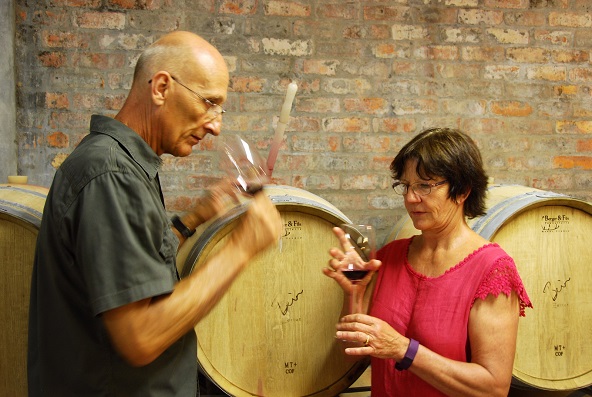
“We group the variations roughly into four categories, eventually spreading over approximately 4-10 different areas across the vineyard, depending on the vintage,” Luca explains. “However, there are still micro-variations within the subzones, which we usually sort out by harvesting them during the first harvest for our Pink Merlot, even if this sometimes only affects individual vines that are performing differently. In this way we achieve better homogeneity in the batches for the red wines, where homogeneity is important.”
Then all they have to do is harvest and vinify the different batches separately to enhance their individual potential and, as the Beins say, to “develop and lift the overall quality of their entire range”.
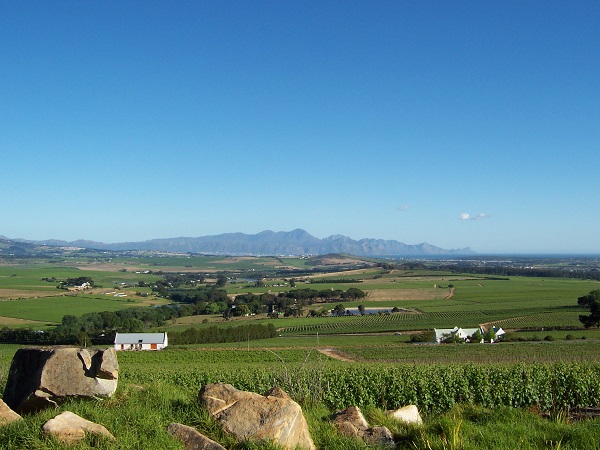
Here’s how precision viticulture works in their case:
- The vineyard is analysed using aerial imagery in the red and near-infrared range.
- Plants are given a score on the Normalized Difference Vegetation Index (NDVI), a reliable indicator for the vigour of plants. It uses the fact that live green plants absorb red light as a source of energy in the process of photosynthesis and reflect solar radiation in the near-infrared spectrum, because infra-red would heat up the plant tissue unnecessarily. This absorbance and reflectance are measured with special photographic equipment and the results are obtained by a numerical algorithm as NDVI for each single pixel. These are translated into a colour code and represented graphically as an image, so Luca and Ingrid can see which sections of their vineyard (above) have high, medium or low vigour.
- This way the Beins can identify zones with different growth patterns and target their management decisions about fertilisation, water allocation, harvest timing, and winemaking accordingly.
How it applies to their range of Merlots
The Little Merlot comes from the moderately vigorous parts of the vineyard, promoting the fruitier side of this variety. Matured in third- and fourth-fill oak barrels, this wine is meant for early drinking and is characterised by red-berry flavours and a silky texture. Sometimes it is complemented with a splash of another Bordeaux variety, such as Cabernet Sauvignon, Malbec or Petit Verdot, bought from neighbouring wineries.The flagship Bein Merlot is the “finest combination of the wines from our various batches,” according to the Beins. Matured in 50% new and 50% second-fill barriques, this Pomerol-style wine is a fine balance between primary fruit and sweet-spicy barrel flavours. It can be enjoyed young yet will also benefit from some ageing. Like the Little Merlot, it often has a small percentage of another classic Bordeaux variety, such as Cabernet Sauvignon or Cabernet Franc, but also Malbec or Petit Verdot, depending on the vintage, to enhance complexity.
The Reserve Merlot originates from a micro-site identified for its potential by means of precision viticulture. It is characterised by more total tannins with finer texture, deeper colour, greater volume, and intense dark berry flavours. Only produced in special years and matured 100% in new French oak, this version is richer, more complex and full-bodied than the rest of the range.
The Pink Merlot is a fruity-dry rosé, made of grapes from the lush parts of the vineyard. Harvested about two weeks earlier than the rest, the grapes get 18 hours of skin contact before undergoing a slow, cool fermentation (3-4 weeks) to preserve the fresh fruit flavours.
To complete the range there is a novelty wine, Merlot Forte, made from partly dried grapes. At harvest, selected bunches are laid out in special drying crates and allowed to partly raisin in the open air. Once the grapes have lost 30% of their weight, they are gently destemmed and fermented on the skins for several weeks. The wine is matured in a tight-grain, second-fill French barrique for 24-36 months, then bottled unfined and only gently filtered.
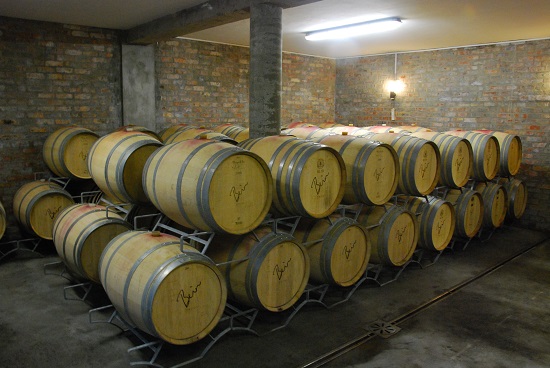
The keys to the Beins' winemaking include:
- Handpicking and carefully sorting the fruit in the vineyard, removing any substandard berries straightaway.
- Double-checking the bunches on a sorting table.
- Destemming and slightly crushing the berries.
- Cooling the mash to 20°C before co-inoculation with yeast and MLF bacteria.
- Fermenting in stainless-steel tanks.
- Extraction is promoted by punch-downs during the first part of the fermentation, later combined with pump-overs, usually 3-4 cycles per day. “Later, depending on the wine, we usually allow for post-fermentation maceration under CO2 cover (closed tanks) with short daily pump-overs, before pressing. Total time on the skins is usually 2-3 weeks, though the batches for the Little Merlot are usually pressed earlier,” Luca says.
- Pressing in an 800L basket press.
- Maturation in small 225L oak barrels sourced from top French cooperages.
- Racking three times in the first year – the first time usually two months after barrelling. “If we mature longer, then three to four times in total with longer intervals,” Luca says.
- SO2 is only added after MLF, aiming for below 100ppm total (between 75-110), with a free sulphur target of 45ppm at bottling.
- After one year of barrel maturation, the different batches are carefully evaluated, followed by a “tedious series” of blind tastings.
- The wines are filtered before bottling. Luca says: “With the three rackings, our wines are actually always very clean after the barrel maturation, yet we prefer to filter all our wines before bottling in order to guarantee our customers an undisturbed drinking pleasure. We tried to bottle our first vintages of the Reserve Merlot without filtering, as it was fancy at the time, but the inevitably resulting sediment was considered as a nuisance. Usual filter size for our reds is 1-2mu, for the rosé sterile filtration (<0,8mu).” The rosé is also fined with Vegecol and Bentonite for protein stability.
‘They are simply different, not in quality but in style!’Bein Private Cellar produces 14,000 to 18,000 bottles a year. “Currently rather less than more,” Luca says.
They bought the vineyard, in the heart of the Stellenbosch Winelands, in 1993. “Having worked for many years as veterinarians back in Switzerland, we decided for a career change,” Luca explains. “We went back to university and emerged four years later as oenologists and viticulturists. Today, we focus wholeheartedly on the production of our quality Merlot, doing everything ourselves from planting to marketing.”
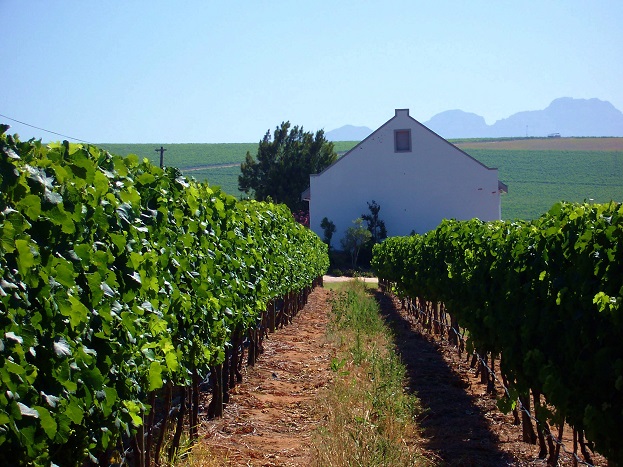
As for focusing on Merlot, it’s the variety experts from Stellenbosch University, who did the initial site survey, recommended. The site, planted with clones MO192, MO12 and MO36 in 1996, is situated on the cooler southern slopes of the Polkadraai Hills. It has deep, well-drained, highly weathered granite soils and a beautiful panoramic view over False Bay, which ensures a refreshing breeze and sufficient air humidity.
But why four wines from one small vineyard?
Luca: “The four wines were not a single bold management decision; it rather came step by step, as we developed together with our vineyard. It started, when we still made our wines in rented cellar space (2002-2004), where we had to harvest everything within a few hours to fit into our dedicated time slot. That was when we realised how uneven actually our crop was, so we designed our future own cellar around the possibility to manage the different batches separately. And together with the advent of precision viticulture, we slowly developed the concept of managing the variability within our vineyard with the making of different wines – with emphasis on DIFFERENT, not QUALITATIVE gradation.
“To make this understandable, I like to make the analogy to a family with several children. They are all different, one child may be good in science, the other artistically gifted, the third a handyman, and so on. And accordingly, every child follows a suitable training, since it makes no sense to force the mathematician to make music or vice versa. In the same way, we do not force grapes into a style, which they are not suited to, but rather allow them to develop in the way that suits their nature.
“Sticking with my analogy of the kids, they finally all succeed in their various fields. And neither is better or worse than the other, they are just different. Even if one earns ten times as much as the other! They are simply different, not in quality but in style!”
Precision viticulture
All the vines are trained to split cordon in a high seven-wire hedge trellis, with a spacing of 1 x 2.75m, pruned to six bearers per running metre.Computer-controlled drip irrigation is used for supplementary irrigation during stress periods, based on remote sensing, continuous soil-moisture measurements and actual climate data.
“Satellite technology to remotely monitor the vineyard has been part of our daily life since 2013,” Luca says. “It is particularly useful to assess the water needs of our vineyard, but also gives additional information such as growth and nitrogen status.”
Where does the aerial imagery come from?
Luca: “For our precision viticulture project, we tried all kind of data sources. In 2004 we started with airplanes until they could no longer fly in our area at the required low altitude due to the proximity to Cape Town airport. We also tried tractor-based sensors (scanning the canopy as you move up and down the rows). Then we tried satellite data, but the resolution is still not good enough. Nowadays we fly with drones. However, for our water management project, we rely heavily on satellite data provided by FruitLook.”
FruitLook was developed by Dutch company eLeaf and is supported in South African by the company Blue North. This service is available for free here thanks to an initiative of the Western Cape Department of Agricultural, which aims at promoting water saving in agriculture in light of climate change, increasing incidence of drought and the increasing need for irrigation.
The portal provides weekly information on crop growth, evapotranspiration deficits and crop nitrogen status for irrigation blocks in orchards and vineyards using satellite data.
The system requires:
- A weather station to monitor seven days in advance what the weather demand will be;
- A flow meter to precisely capture the amount of water that reaches each vineyard/orchard;
- Soil observations with the help of a soil auger or soil moisture (capacitance) probes in the root zone to monitor that the soil moisture is ideal during critical phenological stages and to a depth of 80cm.
How often do you get the imagery data?
Luca: “For our precision viticulture project, we get them at least once a year, generally in January. But we tried with different capture dates, and now and again with multiple captures over the season, but eventually the January capture still delivers our core data.
“For the water management project with FruitLook, it is most important to have continuous data flow, so FruitLook does a perfect job, as it delivers weekly updates over the entire season. In addition, it helps us with complementing data such as N-status and other growth parameters, to better understand our vineyard.”
Aren’t you out in the vineyards most days anyway?
Luca: “Yes, you’re absolutely right. By now, I know every corner of our vineyard and could possibly do the PV-project without the aerial images. But I had to go through the process of yearlong remote sensing to get to this point. However, for the water management project, I couldn’t do it without the satellite data from FruitLook.”
Would you use this method if it wasn’t free?
Luca: “The answer is a resounding YES! In fact, I recently proposed to the FruitLook board of directors to introduce a fee structure for their services with the idea that this project could then be taken more seriously. You know how it is with free offers!”
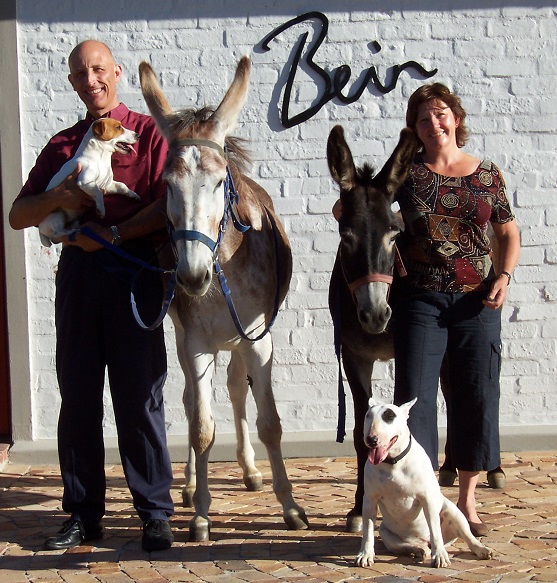
Now tell us about the donkeys.
Bein’s donkeys, Gloria and Poopy, are responsible for producing manure and mowing the cover crop in winter. They also help bring in the harvest. But mostly they are seen as members of the family.
“The first donkey came to us in 2002 as a rescue donkey, while the second came as companion for the first,” Luca explains.


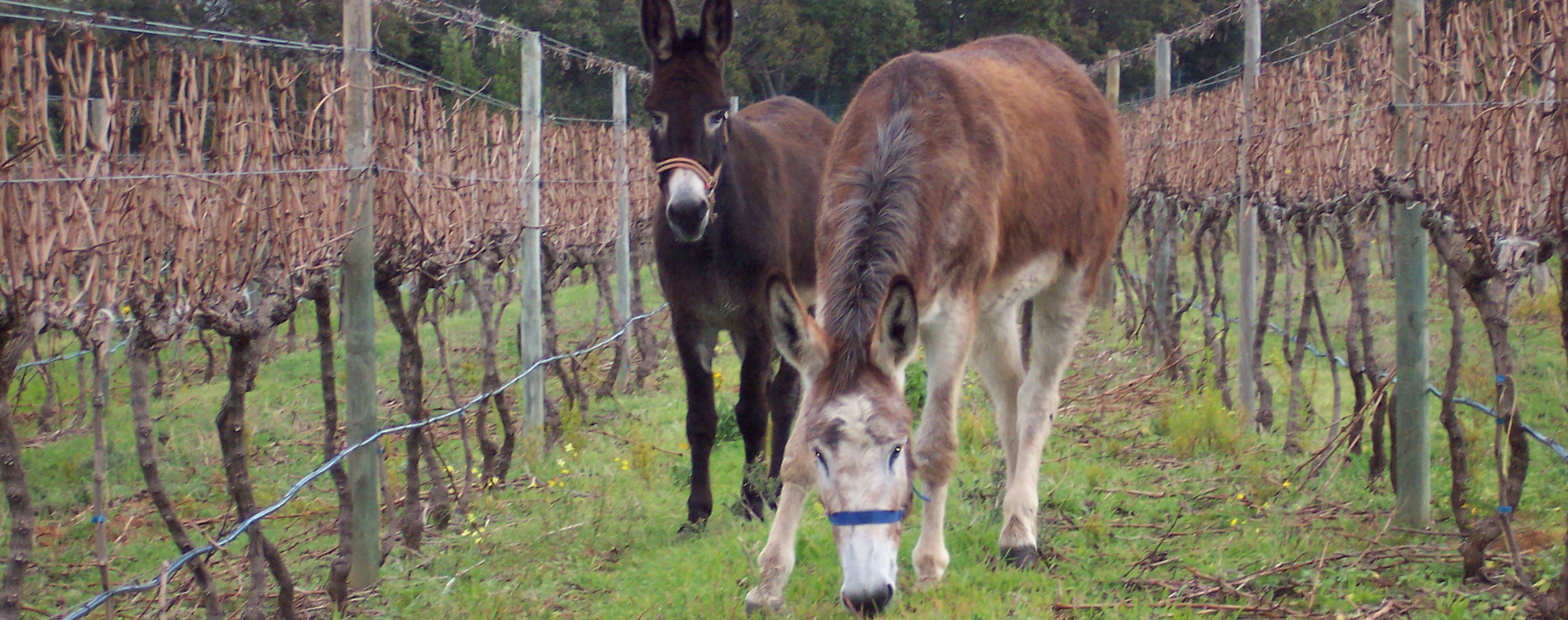










.png)






